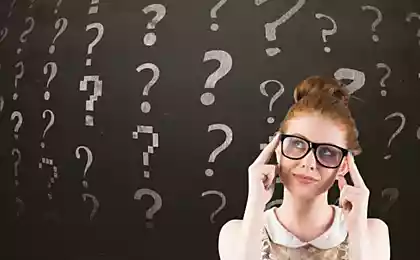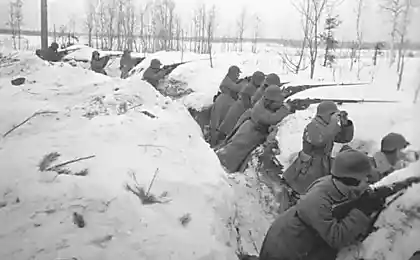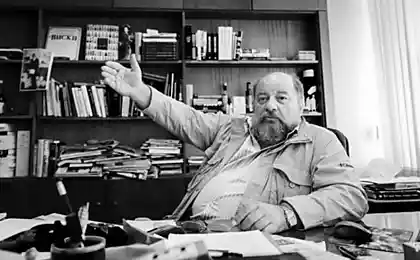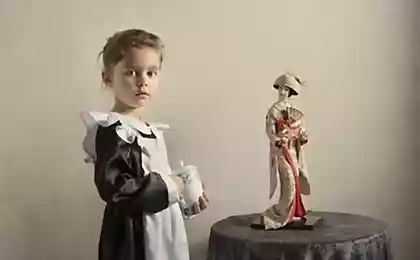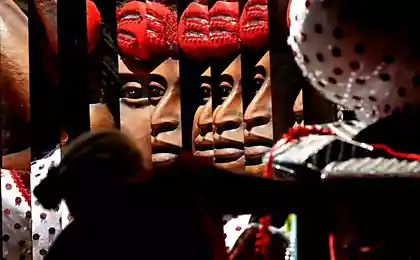896
Mysteries of the Finnish school: Less learn - more you know
The Finnish education for a long time and is consistently the best positions in all possible rankings list that does not allow the article scope. However, the main "prize" of the educational system of the country it is worth mentioning: in accordance with international studies that every 3 years conducts the PISA authoritative organization, the Finnish students showed the world's highest level of knowledge. They also became the children who read the world, won the 2nd place in the natural sciences and 5th - math
.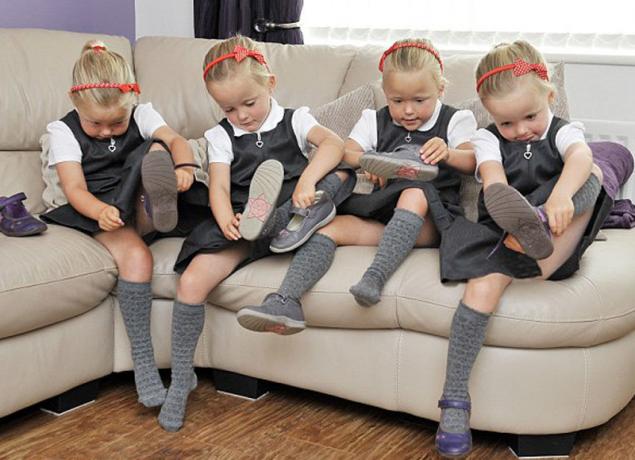
But even this is not so delights the world educational community. Incredibly, that at such high results Finnish students spend the least amount of time for the study and the Finnish state spends on its quality and free education means very moderate in comparison with many other countries.
In general, there is some mystery to solve that teachers try different powers. Finns have nothing to hide and are happy to share the experience by organizing seminars, both in his country and around the world.
Secondary general education compulsory education in Finland includes two school stages
- Lower (alakoulu), from 1st to 6th grade
- Upper (yläkoulu), from 7 th to 9 th grade
. In an additional 10 th grade students can improve their grades. Then the children go to a professional college or continue their studies at the Lyceum (lukio), 11-12 classes in this, the conventional sense.
Finnish school professes progressive load to maximize only for volunteers who have chosen "lukio", those who are very willing and able to learn.
7 principles of the "average" level of the Finnish education
1. Equality:
- Schools
. There is neither the elite nor the "feeble". The country's largest school studying 960 students. In the smallest - 11. All of them have exactly the same equipment, and the possibility of proportional funding. Almost all schools - public, there are a dozen private and public. The difference, moreover, that the parents make a partial payment, in increased requirements for students. As a rule, it is - a kind of "educational" laboratory, the following selected pedagogy: Montessori, Freinet, Steiner, Mortal and Waldorf schools. To apply to private institutions with instruction in English, German, French.
Following the principle of equality, in Finland there is a parallel system of education "from kindergarten to university" in Swedish.
Not forgotten, and the interests of the Sami people in the north can study in their native language.
Until recently, the Finns were not allowed to choose a school, should send their children to "immediate". The ban was removed, but most parents and given to "close" the children, because all schools are equally good.
- All items
. In-depth study of some subjects over others is not welcome. Here, it is considered more important than the mathematics, for example, art. On the contrary, the only exception to create classes with gifted children may be a propensity for drawing, music and sports.
- Parents
. Who profession (social status), the child's parents, the teacher finds out at the last turn, when necessary. Questions teachers, questionnaires relating to employment of parents is prohibited.
- Students
. Finns are not sorted into classes of students, educational institutions according to their abilities or career preferences.
Also, there are no "bad" and "good" students. Comparison pupils with each other is prohibited. Children are ingenious, and with a large deficit of mental abilities, are considered "special" and learn with them. In general, the team trained and children on wheelchairs. In a typical school can be created for a class of students with diseases of vision or hearing. Finns do their best to integrate into society those who require special treatment. The difference between weak and strong students -. The world's smallest
"I am outraged by the Finnish education system, when the school learned my daughter that for local standards can be attributed to the gifted. But when the son went to school, who has plenty of problems, I immediately liked it very much, "- shared his impressions Russian mom
. - Teachers
. There are no "favorite" or "hated grymza". Teachers also did not take a strong liking to the soul "to his class," not isolated "favorites" and vice versa. Any deviation from the harmony lead to the termination of the contract with the teacher. Finnish teachers should just do their job coach. All of them are equally important in the workplace, and "physics" and "lyrics", and working teachers.
-. The equal rights of an adult (teacher, parent) and child
The Finns call this principle - "respect for the learner." Children from first grade to explain their rights, including the right and "complain" to the adult worker. This encourages the Finnish parents to understand their child - an independent person, which is prohibited to offend by word or belt. Humiliate students at teachers does not work because of the nature of the teaching profession, adopted in the Finnish labor legislation. The main feature is that all teachers sign a contract only for 1 academic year, with a possible (or not) an extension and receive high salaries (2 500 euros - an assistant to 5000 - subject teachers)
.
2. Free:
In addition to the training, free
- Lunches
- Excursions, museums and all extra-curricular activities
- School taxi (minibus), which picks up and returns the child, if the nearest school is located on two kilometers
. - Textbooks, all stationery, calculators and even laptops, tablets
. Any fees parental funds for any purpose is prohibited.
3. Personality:
Each child is offered an individual plan of training and development. Customization for the content of the textbooks used, exercise, amount of class and homework and allotted time for them, and taught material: who "roots" - a more detailed account, and from whom is required "tops" - briefly about the main
A lesson in the same class, the children perform exercises of different difficulty levels. And they will be judged according to the personal level. If perfectly executed "their" exercise initial difficulties to get "excellent". Tomorrow will level up - not right, do not worry, you get back a simple task
. In Finnish schools, along with the usual training, there are two unique species of the educational process:
- Supporting the training of "weak" students - what private tutors involved in Russia. In Finland, the popularity of tutoring is not school teachers volunteered to cope with the additional help during the lesson or after it.
- Corrective training - due to the persistent common problems in the assimilation of the material, for example, because of the misunderstanding of non-native Finnish language of instruction, or in connection with the difficulties with remembering, with mathematical skills, as well as anti-social behavior of some children. Corrective training is carried out in small groups or individually.
4. Usability:
The Finns say, "we are preparing for a life, or - for the exams. We choose the first one. " Therefore, there is no examination in Finnish schools. Control and intermediate tests - at the teacher's discretion. There is only one mandatory standardized test at the end of secondary school, the teachers do not care about his results, to anyone for it are not accountable and children specifically prepared: that is, the good and
. In the school teach only what is needed in life. The logarithms of the device or the blast furnace is not useful, and they do not learn. But the local kids from childhood know what the portfolio contract, a bank card. They know how to calculate the percentage of the tax on inheritance or earned income in the future, to create online business card on the Internet, to calculate the price of the goods after several discounts, or to portray "wind rose" in this area.
5. Trust:
Firstly, to the school staff and teachers: no checks District Board, supervisors, training how to teach, and so on. education program in the country - a single, but is only general recommendations, and each teacher uses the method of teaching, which considers appropriate
. Secondly, the credibility of the children that you can do something on their lessons. For example, if the lesson of literature included an educational film, but the student is not interested, he can read a book. It is believed that the student chooses what is good for him.
With this principle, closely related to the other two:
6. Voluntary:
She is a student who wants to learn. Teachers try to attract the attention of the student, but if he has absolutely no interest or ability to learn, to orient the child practically useful in the future, "simple" profession and will not bomb the "twos". Not all build planes, someone has to drive the buses well.
This Finns also see the problem of high school - to identify whether or not this young person to continue their education in high school, or rather a minimum level of knowledge, who are useful to go to a vocational school. It should be noted that both the way the country is equally valued.
Identifying aptitudes of every child to a certain kind of activity through tests and interviews busy school staff specialist - "teacher of the future»
. In general, the process of learning in Finnish schools is soft, delicate, but it does not mean that you can "score" on the school. Control of school regime is required. All lessons will be missed "otsizheny" in the truest sense. For example, a student 6th grade teacher can find a "window" in the schedule and put him on a lesson in the 2nd class: sit, bored and think about life. You will interfere with the youngest - will not include an hour. Do not perform a given teacher, you do not work in the classroom - no one will call the parents to threaten, insult, referring to mental incapacity or laziness. If the parents are not just concerned about their child's learning, he will not go quietly into the next class.
Stay for the second year in Finland is not a shame, especially since the 9th grade. By adulthood need to prepare seriously, so in Finnish schools have an additional (optional) 10-th class.
7. Independence:
The Finns believe that schools should teach a child to master - an independent future successful life
. So here are taught to think and acquire knowledge themselves. New the teacher says - everything is in the books. What matters is not the memorized formulas and the ability to use reference, text, internet, calculator - to attract the necessary resources to address the current problems
. Also, school teachers do not intervene in the conflict of students, giving them the opportunity to prepare for life situations comprehensively, and to develop the ability to stand up for themselves.
School, school, do you dream of me
The educational process in the "identical" Finnish schools, however, is organized very differently.
1. When and how much learning?
The school year begins in Finland in August, from 8 to 16, a single day do not exist. And it ends at the end of May. In the autumn half has 3-4 days of autumn vacation and 2 weeks of Christmas. The spring term includes week of February - "ski" vacations (Finnish families how to plant, go together to ski) and Easter
. Education - five days, only the day shift. Friday - "short day»
. 2. What are learning?
1-2 kl .:
studied the native (Finnish) language and reading, mathematics, natural science, religion (according to religion) or "conception of life" for those who do not care about religion; music, fine arts, physical education and labor. One lesson can be studied in several disciplines.
3-6 kl .:
start learning English. In the 4th class - another foreign language of your choice: French, Swedish, German or Russian. Impose additional discipline - elective subjects in each school they own: the speed of typing on the keyboard, computer literacy, the ability to work with wood, choral singing. Almost all schools - playing a musical instrument, for the first 9 years of schooling children try everything from pipes to Bass
. In the 5th grade added biology, geography, physics, chemistry, history. From the 1st to the 6th grade education is one teacher for almost all subjects. The lesson of physical culture - is any sports game 1-3 times a week, depending on the school. After class is mandatory shower. Literature, in the usual sense, is not studied, but rather reading. Subject teachers appear only in 7th grade.
7-9 kl .:
Finnish language and literature (reading culture of the region), Swedish, English, mathematics, biology, geography, physics, chemistry, health foundations, religion (conception of life), music, fine arts, physical education, electives and work, which is not split apart " boys "and" girls ". Together, they learn cooking soups and cut out a jigsaw. In the 9th grade - 2 weeks exploring the "working life". The boys are currently any "work area" and go with great pleasure "to work».
3. Who needs assessment?
The country has adopted a 10-point system, but until 7th grade used verbal score mediocre, fair, good, excellent. From 1st to 3rd class mark in any variants absent.
All schools are connected to the public e «Wilma» system, something like an electronic diary of the school to which parents receive a personal access code. Teachers assign grades, record skips, informed of the child's life at school; psychologist, social worker, "the teacher of the future", a paramedic also leave there the necessary information to parents.
Estimates in Finnish schools do not have sinister painting and required only for the student, apply for child motivation in achieving this goal and the self that could improve the knowledge, if desired. They do not affect the reputation of the teacher, school and district performance are not spoiled.
school life Trivia:
- The territory of schools is not fenced, security at the entrance no. Most schools have a system of automatic lock on the front door to enter the building can only be according to the schedule.
- Children do not necessarily sit behind desks, tables, and can be on the floor (carpet) to stay. In some schools, classes are equipped with sofas, armchairs. Premises elementary school and carpeted floor mats.
- No form, as well as any requirements regarding wear, can even come in pajamas. Replaceable footwear is required, but the majority of junior and middle managers prefer to run around in socks.
- In warm weather, lessons are often held in the open air near the school, directly on the grass or on a specially equipped as an amphitheater benches. During elementary school students change necessarily lead out to the street, even for 10 minutes.
- Homework is rarely asked. Children need to rest. And parents should not teach children lessons, teachers recommend instead a family trip to the museum, the forest or the pool.
- Training "at the board" is not used, do not cause children to retell the material. The teacher briefly sets the overall tone of the lesson, then walks among the students, helping them and controlling tasks performed. The same is engaged and the assistant teacher (there is such a position in the Finnish school).
- In notebooks, you can write with a pencil and erase as much as necessary. Moreover, the teacher can check assignment pencil!
For the first time in the first Finnish class
A friend of mine, recently moved to Finland, last year took the child in the 1st grade. She was worried and preparing for the event, as it should be, according to Russian traditions. Later, emotionally shared an unusual experience:
"Gathering near the school at 9 am on 14 August. The first shock. The impression that the children "how to sleep, and come." My son is in a jacket and tie and looked like a bunch of guest artist. Colors other than us, no one gave, bows, balls, and other songs were not attributes of a holiday. The headmaster went to students in grades 1-4 (senior - in a different building), said a few words of welcome and mentioned by name the students, who in any class. All. Hello, our very first of September!
All foreigners are defined in one class: the Swedes, the Arabs, Hindu, an Englishwoman, a pair of children from Estonia, Ukraine, Russia. Finnish teacher and interpreter 3. Some children attend the 1st class for the second year, so they are also "in the wings" to help.
The second shock is already on the positive side: from the parents to the school no training is required. Literally everything "from backpacks to shale" (briefcase, filled with "the Office", flip flops for the pool, even a towel) the child was given at school. Parents do not need anything at all, "all is well, your child is wonderful," say everything. The only thing taken care of - whether enough time spend with the child and parents
. Third, memorable moment - a dining room. На сайте школы меню на месяц, ребенок сам накладывает себе, что хочет из предложенного, на его школьной странице в Интернете есть «корзина». Меню учитывает любые предпочтения ребенка, любую диету, если таковая имеется, нужно только сообщить, также есть вегетарианская кухня. В столовой дети, как и в классе, сидят каждый за своим столом».
Вот так выглядит финское среднее образование в очень кратком изложении. Может быть, кому-то оно покажется неправильным. Финны не претендуют на идеал и не успокаиваются на достигнутом, даже в самом хорошем можно найти минусы. Они постоянно исследуют, насколько их школьная система соответствует происходящим изменениям в обществе. Например, в данный момент готовятся реформы, предполагающие разделить математику на алгебру и геометрию, и увеличить часы преподавания по ним, а также выделить литературу и общественную науку как отдельные предметы.
Однако самое главное финская школа определенно делает. Их дети не вскрикивают по ночам от нервного перенапряжения, не мечтают поскорее вырасти, не испытывают ненависти к школе, не терзают себя и всю семью, готовясь к очередным экзаменам. Спокойные, рассудительные и счастливые, они читают книжки, легко смотрят фильмы без перевода на финский язык, играют в компьютерные игры, гоняют на роликах, великах, байках, сочиняют музыку, театральные пьесы, поют. Они радуются жизни. И между всем этим успевают еще и учиться.
Наталья Киреева, Хельсинки
.

But even this is not so delights the world educational community. Incredibly, that at such high results Finnish students spend the least amount of time for the study and the Finnish state spends on its quality and free education means very moderate in comparison with many other countries.
In general, there is some mystery to solve that teachers try different powers. Finns have nothing to hide and are happy to share the experience by organizing seminars, both in his country and around the world.
Secondary general education compulsory education in Finland includes two school stages
- Lower (alakoulu), from 1st to 6th grade
- Upper (yläkoulu), from 7 th to 9 th grade
. In an additional 10 th grade students can improve their grades. Then the children go to a professional college or continue their studies at the Lyceum (lukio), 11-12 classes in this, the conventional sense.
Finnish school professes progressive load to maximize only for volunteers who have chosen "lukio", those who are very willing and able to learn.
7 principles of the "average" level of the Finnish education
1. Equality:
- Schools
. There is neither the elite nor the "feeble". The country's largest school studying 960 students. In the smallest - 11. All of them have exactly the same equipment, and the possibility of proportional funding. Almost all schools - public, there are a dozen private and public. The difference, moreover, that the parents make a partial payment, in increased requirements for students. As a rule, it is - a kind of "educational" laboratory, the following selected pedagogy: Montessori, Freinet, Steiner, Mortal and Waldorf schools. To apply to private institutions with instruction in English, German, French.
Following the principle of equality, in Finland there is a parallel system of education "from kindergarten to university" in Swedish.
Not forgotten, and the interests of the Sami people in the north can study in their native language.
Until recently, the Finns were not allowed to choose a school, should send their children to "immediate". The ban was removed, but most parents and given to "close" the children, because all schools are equally good.
- All items
. In-depth study of some subjects over others is not welcome. Here, it is considered more important than the mathematics, for example, art. On the contrary, the only exception to create classes with gifted children may be a propensity for drawing, music and sports.
- Parents
. Who profession (social status), the child's parents, the teacher finds out at the last turn, when necessary. Questions teachers, questionnaires relating to employment of parents is prohibited.
- Students
. Finns are not sorted into classes of students, educational institutions according to their abilities or career preferences.
Also, there are no "bad" and "good" students. Comparison pupils with each other is prohibited. Children are ingenious, and with a large deficit of mental abilities, are considered "special" and learn with them. In general, the team trained and children on wheelchairs. In a typical school can be created for a class of students with diseases of vision or hearing. Finns do their best to integrate into society those who require special treatment. The difference between weak and strong students -. The world's smallest
"I am outraged by the Finnish education system, when the school learned my daughter that for local standards can be attributed to the gifted. But when the son went to school, who has plenty of problems, I immediately liked it very much, "- shared his impressions Russian mom
. - Teachers
. There are no "favorite" or "hated grymza". Teachers also did not take a strong liking to the soul "to his class," not isolated "favorites" and vice versa. Any deviation from the harmony lead to the termination of the contract with the teacher. Finnish teachers should just do their job coach. All of them are equally important in the workplace, and "physics" and "lyrics", and working teachers.
-. The equal rights of an adult (teacher, parent) and child
The Finns call this principle - "respect for the learner." Children from first grade to explain their rights, including the right and "complain" to the adult worker. This encourages the Finnish parents to understand their child - an independent person, which is prohibited to offend by word or belt. Humiliate students at teachers does not work because of the nature of the teaching profession, adopted in the Finnish labor legislation. The main feature is that all teachers sign a contract only for 1 academic year, with a possible (or not) an extension and receive high salaries (2 500 euros - an assistant to 5000 - subject teachers)
.
2. Free:
In addition to the training, free
- Lunches
- Excursions, museums and all extra-curricular activities
- School taxi (minibus), which picks up and returns the child, if the nearest school is located on two kilometers
. - Textbooks, all stationery, calculators and even laptops, tablets
. Any fees parental funds for any purpose is prohibited.
3. Personality:
Each child is offered an individual plan of training and development. Customization for the content of the textbooks used, exercise, amount of class and homework and allotted time for them, and taught material: who "roots" - a more detailed account, and from whom is required "tops" - briefly about the main
A lesson in the same class, the children perform exercises of different difficulty levels. And they will be judged according to the personal level. If perfectly executed "their" exercise initial difficulties to get "excellent". Tomorrow will level up - not right, do not worry, you get back a simple task
. In Finnish schools, along with the usual training, there are two unique species of the educational process:
- Supporting the training of "weak" students - what private tutors involved in Russia. In Finland, the popularity of tutoring is not school teachers volunteered to cope with the additional help during the lesson or after it.
- Corrective training - due to the persistent common problems in the assimilation of the material, for example, because of the misunderstanding of non-native Finnish language of instruction, or in connection with the difficulties with remembering, with mathematical skills, as well as anti-social behavior of some children. Corrective training is carried out in small groups or individually.
4. Usability:
The Finns say, "we are preparing for a life, or - for the exams. We choose the first one. " Therefore, there is no examination in Finnish schools. Control and intermediate tests - at the teacher's discretion. There is only one mandatory standardized test at the end of secondary school, the teachers do not care about his results, to anyone for it are not accountable and children specifically prepared: that is, the good and
. In the school teach only what is needed in life. The logarithms of the device or the blast furnace is not useful, and they do not learn. But the local kids from childhood know what the portfolio contract, a bank card. They know how to calculate the percentage of the tax on inheritance or earned income in the future, to create online business card on the Internet, to calculate the price of the goods after several discounts, or to portray "wind rose" in this area.
5. Trust:
Firstly, to the school staff and teachers: no checks District Board, supervisors, training how to teach, and so on. education program in the country - a single, but is only general recommendations, and each teacher uses the method of teaching, which considers appropriate
. Secondly, the credibility of the children that you can do something on their lessons. For example, if the lesson of literature included an educational film, but the student is not interested, he can read a book. It is believed that the student chooses what is good for him.
With this principle, closely related to the other two:
6. Voluntary:
She is a student who wants to learn. Teachers try to attract the attention of the student, but if he has absolutely no interest or ability to learn, to orient the child practically useful in the future, "simple" profession and will not bomb the "twos". Not all build planes, someone has to drive the buses well.
This Finns also see the problem of high school - to identify whether or not this young person to continue their education in high school, or rather a minimum level of knowledge, who are useful to go to a vocational school. It should be noted that both the way the country is equally valued.
Identifying aptitudes of every child to a certain kind of activity through tests and interviews busy school staff specialist - "teacher of the future»
. In general, the process of learning in Finnish schools is soft, delicate, but it does not mean that you can "score" on the school. Control of school regime is required. All lessons will be missed "otsizheny" in the truest sense. For example, a student 6th grade teacher can find a "window" in the schedule and put him on a lesson in the 2nd class: sit, bored and think about life. You will interfere with the youngest - will not include an hour. Do not perform a given teacher, you do not work in the classroom - no one will call the parents to threaten, insult, referring to mental incapacity or laziness. If the parents are not just concerned about their child's learning, he will not go quietly into the next class.
Stay for the second year in Finland is not a shame, especially since the 9th grade. By adulthood need to prepare seriously, so in Finnish schools have an additional (optional) 10-th class.
7. Independence:
The Finns believe that schools should teach a child to master - an independent future successful life
. So here are taught to think and acquire knowledge themselves. New the teacher says - everything is in the books. What matters is not the memorized formulas and the ability to use reference, text, internet, calculator - to attract the necessary resources to address the current problems
. Also, school teachers do not intervene in the conflict of students, giving them the opportunity to prepare for life situations comprehensively, and to develop the ability to stand up for themselves.
School, school, do you dream of me
The educational process in the "identical" Finnish schools, however, is organized very differently.
1. When and how much learning?
The school year begins in Finland in August, from 8 to 16, a single day do not exist. And it ends at the end of May. In the autumn half has 3-4 days of autumn vacation and 2 weeks of Christmas. The spring term includes week of February - "ski" vacations (Finnish families how to plant, go together to ski) and Easter
. Education - five days, only the day shift. Friday - "short day»
. 2. What are learning?
1-2 kl .:
studied the native (Finnish) language and reading, mathematics, natural science, religion (according to religion) or "conception of life" for those who do not care about religion; music, fine arts, physical education and labor. One lesson can be studied in several disciplines.
3-6 kl .:
start learning English. In the 4th class - another foreign language of your choice: French, Swedish, German or Russian. Impose additional discipline - elective subjects in each school they own: the speed of typing on the keyboard, computer literacy, the ability to work with wood, choral singing. Almost all schools - playing a musical instrument, for the first 9 years of schooling children try everything from pipes to Bass
. In the 5th grade added biology, geography, physics, chemistry, history. From the 1st to the 6th grade education is one teacher for almost all subjects. The lesson of physical culture - is any sports game 1-3 times a week, depending on the school. After class is mandatory shower. Literature, in the usual sense, is not studied, but rather reading. Subject teachers appear only in 7th grade.
7-9 kl .:
Finnish language and literature (reading culture of the region), Swedish, English, mathematics, biology, geography, physics, chemistry, health foundations, religion (conception of life), music, fine arts, physical education, electives and work, which is not split apart " boys "and" girls ". Together, they learn cooking soups and cut out a jigsaw. In the 9th grade - 2 weeks exploring the "working life". The boys are currently any "work area" and go with great pleasure "to work».
3. Who needs assessment?
The country has adopted a 10-point system, but until 7th grade used verbal score mediocre, fair, good, excellent. From 1st to 3rd class mark in any variants absent.
All schools are connected to the public e «Wilma» system, something like an electronic diary of the school to which parents receive a personal access code. Teachers assign grades, record skips, informed of the child's life at school; psychologist, social worker, "the teacher of the future", a paramedic also leave there the necessary information to parents.
Estimates in Finnish schools do not have sinister painting and required only for the student, apply for child motivation in achieving this goal and the self that could improve the knowledge, if desired. They do not affect the reputation of the teacher, school and district performance are not spoiled.
school life Trivia:
- The territory of schools is not fenced, security at the entrance no. Most schools have a system of automatic lock on the front door to enter the building can only be according to the schedule.
- Children do not necessarily sit behind desks, tables, and can be on the floor (carpet) to stay. In some schools, classes are equipped with sofas, armchairs. Premises elementary school and carpeted floor mats.
- No form, as well as any requirements regarding wear, can even come in pajamas. Replaceable footwear is required, but the majority of junior and middle managers prefer to run around in socks.
- In warm weather, lessons are often held in the open air near the school, directly on the grass or on a specially equipped as an amphitheater benches. During elementary school students change necessarily lead out to the street, even for 10 minutes.
- Homework is rarely asked. Children need to rest. And parents should not teach children lessons, teachers recommend instead a family trip to the museum, the forest or the pool.
- Training "at the board" is not used, do not cause children to retell the material. The teacher briefly sets the overall tone of the lesson, then walks among the students, helping them and controlling tasks performed. The same is engaged and the assistant teacher (there is such a position in the Finnish school).
- In notebooks, you can write with a pencil and erase as much as necessary. Moreover, the teacher can check assignment pencil!
For the first time in the first Finnish class
A friend of mine, recently moved to Finland, last year took the child in the 1st grade. She was worried and preparing for the event, as it should be, according to Russian traditions. Later, emotionally shared an unusual experience:
"Gathering near the school at 9 am on 14 August. The first shock. The impression that the children "how to sleep, and come." My son is in a jacket and tie and looked like a bunch of guest artist. Colors other than us, no one gave, bows, balls, and other songs were not attributes of a holiday. The headmaster went to students in grades 1-4 (senior - in a different building), said a few words of welcome and mentioned by name the students, who in any class. All. Hello, our very first of September!
All foreigners are defined in one class: the Swedes, the Arabs, Hindu, an Englishwoman, a pair of children from Estonia, Ukraine, Russia. Finnish teacher and interpreter 3. Some children attend the 1st class for the second year, so they are also "in the wings" to help.
The second shock is already on the positive side: from the parents to the school no training is required. Literally everything "from backpacks to shale" (briefcase, filled with "the Office", flip flops for the pool, even a towel) the child was given at school. Parents do not need anything at all, "all is well, your child is wonderful," say everything. The only thing taken care of - whether enough time spend with the child and parents
. Third, memorable moment - a dining room. На сайте школы меню на месяц, ребенок сам накладывает себе, что хочет из предложенного, на его школьной странице в Интернете есть «корзина». Меню учитывает любые предпочтения ребенка, любую диету, если таковая имеется, нужно только сообщить, также есть вегетарианская кухня. В столовой дети, как и в классе, сидят каждый за своим столом».
Вот так выглядит финское среднее образование в очень кратком изложении. Может быть, кому-то оно покажется неправильным. Финны не претендуют на идеал и не успокаиваются на достигнутом, даже в самом хорошем можно найти минусы. Они постоянно исследуют, насколько их школьная система соответствует происходящим изменениям в обществе. Например, в данный момент готовятся реформы, предполагающие разделить математику на алгебру и геометрию, и увеличить часы преподавания по ним, а также выделить литературу и общественную науку как отдельные предметы.
Однако самое главное финская школа определенно делает. Их дети не вскрикивают по ночам от нервного перенапряжения, не мечтают поскорее вырасти, не испытывают ненависти к школе, не терзают себя и всю семью, готовясь к очередным экзаменам. Спокойные, рассудительные и счастливые, они читают книжки, легко смотрят фильмы без перевода на финский язык, играют в компьютерные игры, гоняют на роликах, великах, байках, сочиняют музыку, театральные пьесы, поют. Они радуются жизни. И между всем этим успевают еще и учиться.
Наталья Киреева, Хельсинки














